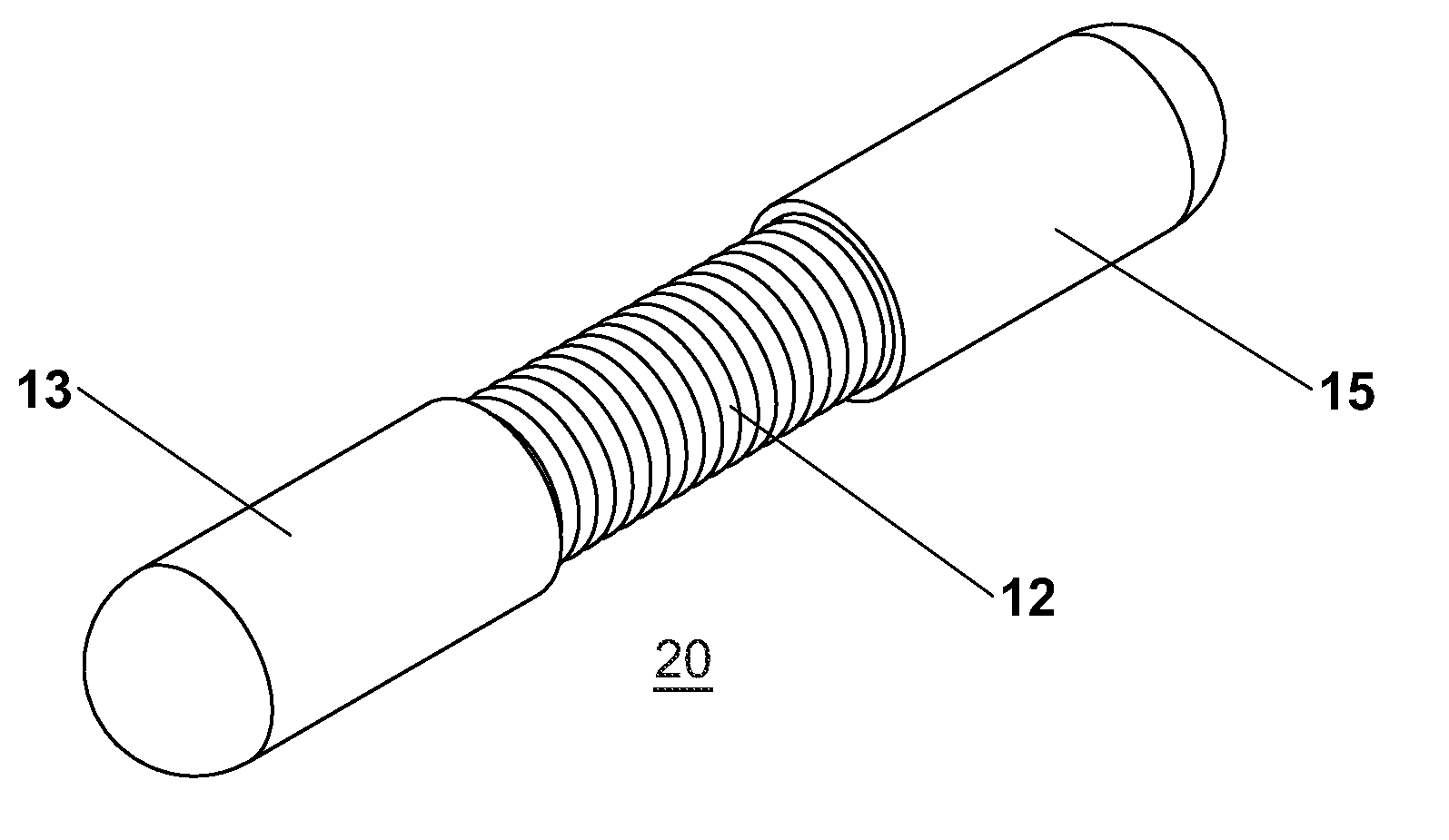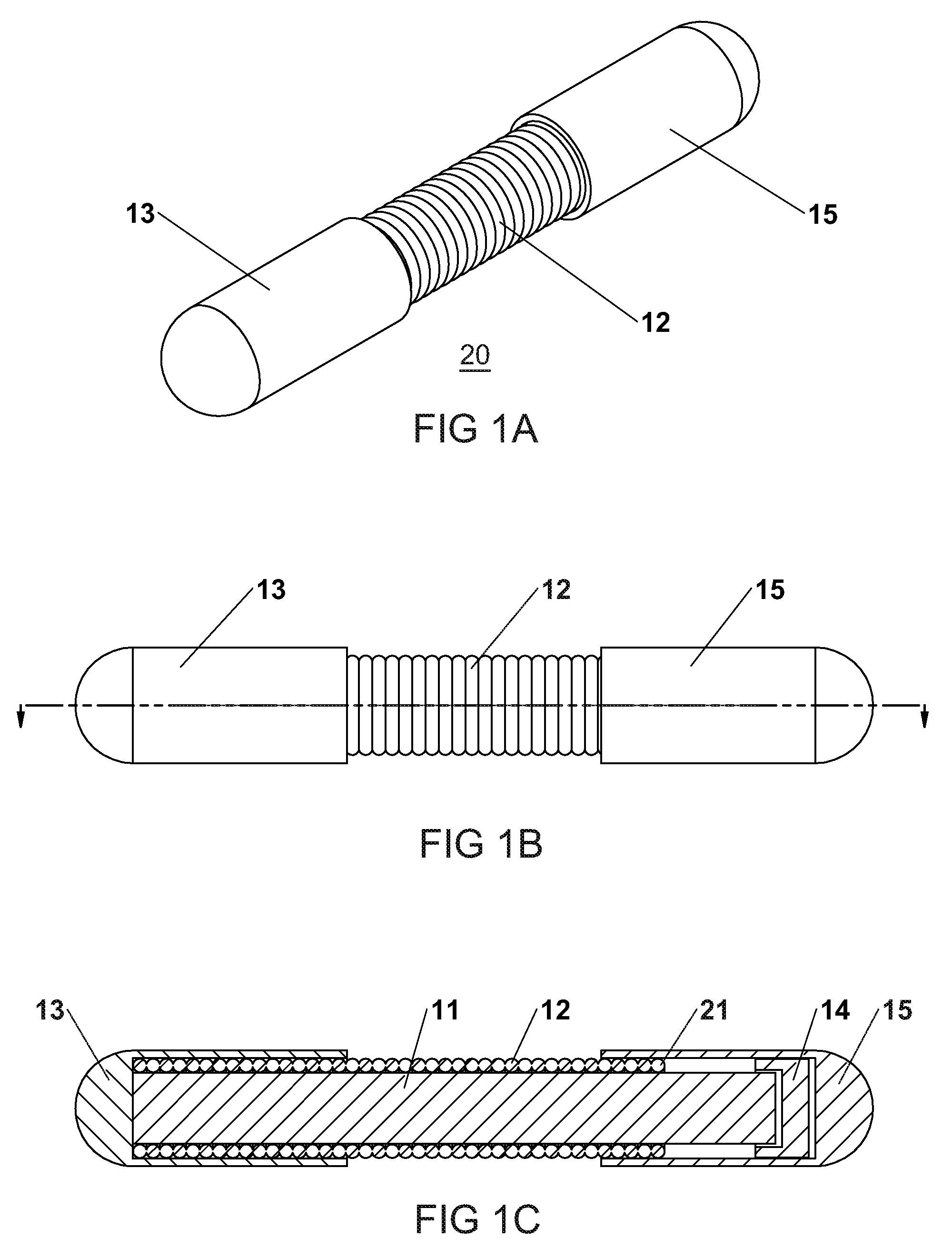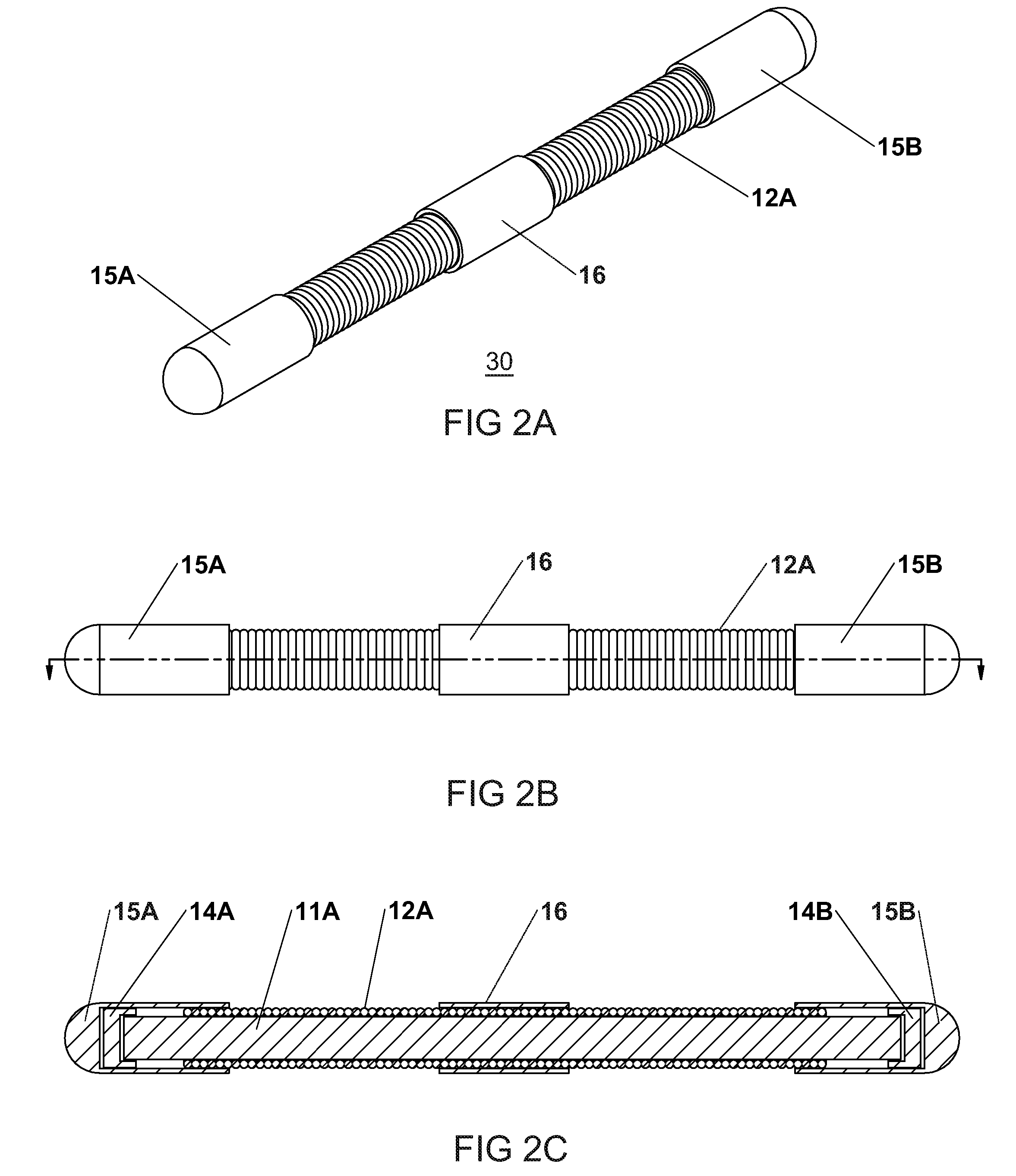Flexible rod assembly for spinal fixation
a flexible rod and spinal fixation technology, applied in the field of flexible rod assemblies, can solve the problems of not allowing virtually any bending of the spine, not allowing axial stretch along the rod axis, and prior art arrangements that exhibit significant limitations in being able to provide stabilization of the spine, and achieve the effect of stabilizing the spine of a patien
- Summary
- Abstract
- Description
- Claims
- Application Information
AI Technical Summary
Benefits of technology
Problems solved by technology
Method used
Image
Examples
first embodiment
[0038]A first embodiment is shown in FIGS. 1a through 1c, in which a flexible spinal fixation bendably resilient rod assembly 20 is adapted to span a single spinal disc and to be fastened at each end to an adjacent vertebra via pedicle screws.
[0039]The various rod assembly embodiments described herein are bendably resilient. That is, they resiliently resist bending from their original configurations and return to those original configurations when the bending stress applied to them is relaxed.
[0040]The assembly 20 consists of a single length (unitary) flexible inner core rod 11 slidably and coaxially disposed within an outer cylindrical spring 12. A fixed end coupling 13 is positioned over the core 11 and overlaps the adjacent end of spring 12 in such a way as to effectively secure the fixed end coupling 13, adjacent end of core 11, and adjacent end of spring 12 together.
[0041]An optional end stop 14 is affixed to the opposite end of core rod 11 to provide a limit to axial travel or...
second embodiment
[0043]A second embodiment is shown in FIGS. 2a through 2c which shows a rod assembly 30 designed to span three vertebrae (two disc spaces). Its construction and operation is similar to the first embodiment illustrated in FIGS. 1a through 1c, having an inner core rod 11A as described above, but with sliding or floating end couplings 15A and 15B at each end. At the center of the assembly 30 is a fixed coupling 16 which is secured to the adjacent central portions of both the core 11A and spring 12A. The central coupling 16 also provides a clamping location for a middle pedicle screw.
third embodiment
[0044]A third embodiment is shown in FIGS. 3a through 3c. The rod assembly 40 is designed to span a single spinal disc space (two vertebrae) and has a construction similar to that of the assembly 20. The assembly 40 includes a fixed end coupling 13A, which is substantially longer than the opposite floating end coupling 15C, for rigid fixation of adjacent spinal discs and vertebrae. The longer fixed end coupling 13A is (except for length) similar to the fixed end coupling 13 shown in FIGS. 1a through 1c, and also serves a purpose similar to that of the fixed center coupling 16 shown in FIGS. 2a through 2c. This third embodiment is suitable for use in patients who have vertebrae which were fused in previous surgery.
PUM
 Login to View More
Login to View More Abstract
Description
Claims
Application Information
 Login to View More
Login to View More - R&D
- Intellectual Property
- Life Sciences
- Materials
- Tech Scout
- Unparalleled Data Quality
- Higher Quality Content
- 60% Fewer Hallucinations
Browse by: Latest US Patents, China's latest patents, Technical Efficacy Thesaurus, Application Domain, Technology Topic, Popular Technical Reports.
© 2025 PatSnap. All rights reserved.Legal|Privacy policy|Modern Slavery Act Transparency Statement|Sitemap|About US| Contact US: help@patsnap.com



